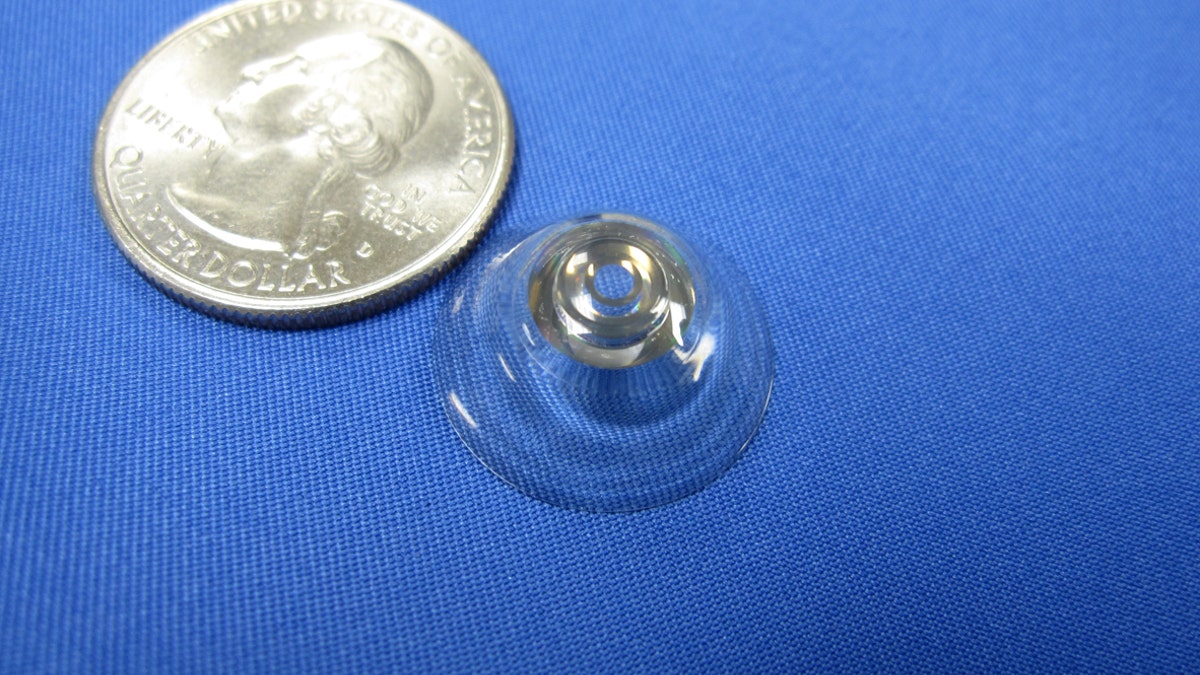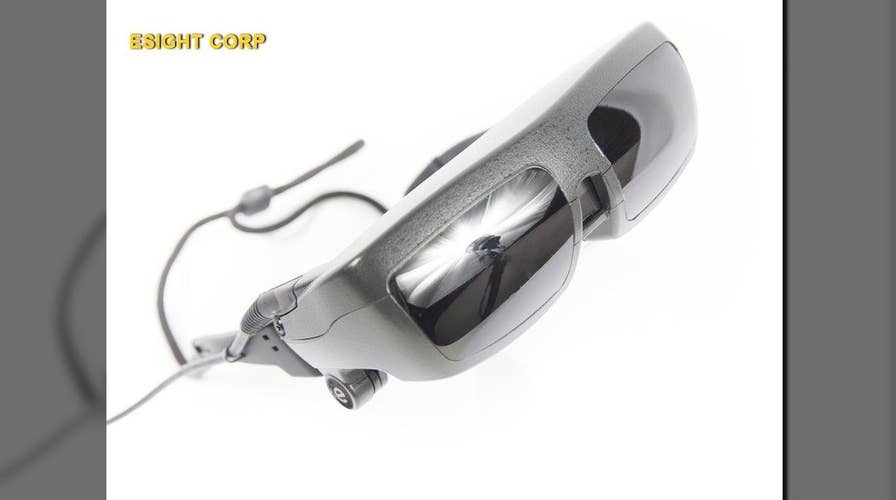Firepower: Could bionic eyes give the military super sight?
Tech Take: Allison Barrie with an inside look at a few of the many exciting projects underway to both restore and provide enhanced sight
Could bionic eyes restore sight to the blind and give the U.S. military super sight?
Bionic implanted eyeballs, “Star Trek”-style visors, telescopic contact lenses ... these are just a few of the many exciting projects underway to both restore and provide enhanced sight.
Significant strides have been made in tech that will restore and transform lives - replacing white canes, service animals, braille machines and more for the visually impaired.
There has been a lot in the media about prosthetic breakthroughs for U.S. veterans, but what about vision? Last year the Blinded Veterans Association told the House and Senate Committees on Veterans Affairs that there are an estimated 131,580 legally blinded veterans in the U.S., citing data from the Depatment of Veterans Affairs.
THE 5 COOLEST MILITARY INNOVATIONS OF 2016
Technology is being increasingly harnessed to overcome blindness. So far, much of the key progress has been restricted to restoring sight for those with a specific type of visual impairment – in particular retinitis pigmentosa – an inherited condition that involves the loss of cells in the retina and causes a decline in vision.
BIONIC EYE IMPLANTS
One of the first and most promising “bionic eyes” is the Argus II made by Second Sight, which is geared toward patients with retinitis pigmentosa.
The system has two parts: a very high tech retinal implant and a camera mounted on eyeglasses or shades. The “bionic eye” is surgically implanted in, and on, the eye. It has an antenna, an electronics case, and an electrode array.

Argus II (Second Sight).
The camera processes what it sees and sends it to a small computer that the person wears. The data is processed and translated into instructions that are sent wirelessly to the antenna in the implant.
MARINES GET GROUNDBREAKING, UNSTOPPABLE NEW RIFLE MAGAZINE
The retinal implant has 60 electrodes in it. These electrodes provide information to the optic nerve and the optic nerve relays the data to the brain. The optic nerve understands this data as shapes, light and movement.
This vision is not yet like normal sight and it will not restore vision to 20/20. But with Argus II, folks who were once sightless can see in black and white – they can read a book and see their homes and loved ones for the first time. More advances are in the pipeline for Argus II to restore color as well as resolution and brightness.
Argus II bionic eyes require functioning retina so many, including many visually impaired veterans, can’t take advantage of that tech – Second Sight’s Orion technology could be the solution.
PLUGGING INTO THE BRAIN
By skipping the optic nerve and directly plugging into the visual cortex, Orion could hold enormous potential for veterans who have visual impairment due to trauma.
'STAR TREK'-STYLE SURVEILLANCE DRONE FOR THE US MILITARY
In fact, this approach could potentially help those blinded by cancer or glaucoma.
This new device bypasses the retinal layer and implants electrodes directly onto the visual region of the brain.
Second Sight announced a major breakthrough for its Orion I project late last year. In a trial at UCLA, the very first of these devices to directly plug into the brain, a wireless visual cortical stimulator, was implanted in a human subject. The test was a success and restored vision to a 30-year old patient with no major side effects.
‘STAR TREK’-STYLE VISOR
Ever seen “Star Trek?” One American company has created a sort of real-life version of character Geordi La Forge’s “visor.”
'STAR WARS'-STYLE SPEEDERS COULD CARRY US TROOPS
With the eSight 3 device, the wearer can see full-color video images without a time lag. Wherever the user looks and whatever he or she looks at, the high-speed, high-def camera captures it for them.
Advanced algorithms are used for the video feed. The video is then displayed on two screens in front of the wearer’s eyes. The video image is provided in a way that overcomes their vision loss.
eSight isn’t a cure-all at this point. If the retina damage is too severe, then it may not work. It tends to be more helpful with macular degeneration, for example, than glaucoma. The company says the technology has about a 50 percent chance of working with all conditions.
GIVING SOLDIERS SUPER SIGHT
Advances in this field are also creating the potential to give US warfighters super vision.
HOW F-35A FIGHTER PILOTS ARE HARNESSING HIGH-TECH 'SEE-THROUGH' HELMETS
One exciting example is a new contact lens funded by DARPA, and made by École Polytechnique Fédérale de Lausanne, that gives the wearer the ability to zoom like a telescope.

(EPFL)
The scleral lens has thin aluminum mirrors built into it that work with special liquid crystal glasses. These glasses are connected to an electronic system.
Think “Mission Impossible.” If you blink your right eye, then it allows magnifying – but if you wink your left then the vision is normal. If you blink normally, it doesn’t trigger the magnifying mode.
In addition to the contact lens, other projects have made great headway. Even Second Sight bionic eyes can see in IR with a specific input device.
NEW TECH MAKES TANK ARMOR 'SEE-THROUGH'
Augmenting soldiers with vision-enhancing tech could provide advantages for ground troops and special operations in particular. Warfighters could switch between seeing in night vision, infrared, thermal, zoom, telescopic and more. Whether worn or implanted, it would provide enhanced capabilities that remove the weight of carrying optics and the time lost shifting optics by switching instead at the speed of thought.
Just one specific illustration of how helpful this could be is explosives. If the amazing advances in explosive detection could be miniaturized and adapted for military bionic eyes, then warfighters with enhanced vision could scan and spot these hidden IEDs before they could strike – putting an end to injury and death due to IEDs.
Meet a Green Beret who was blinded in combat, but still serves, shoots with remarkable accuracy and explored Antarctica with Prince Harry at Tactical Talk this week.

